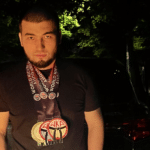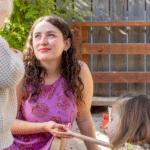By: Maria Williams
Around 50 years ago, the world was gripped by the story of David Vetter, a young boy from Texas nicknamed the “Bubble Boy”. Born in 1971, he had to live inside a sterile plastic bubble due to severe combined immunodeficiency (SCID). This meant that David’s immune system was so weak that he was incredibly susceptible to all kinds of pathogens. David’s case received national and international media attention. In 1984, David died at the age of 12 from complications arising from an experimental bone marrow transplant he received from his sister in a bid to cure his disease.
Rev. Dr. Raymond J. Lawrence, who was director of chaplains at the hospital David was confined in for his life, believes that David’s tragically short life was one of the inhumane medical experiments in American history. It was partly inadvertent but also partly
a product of unexamined medical hubris.
“My place in the saga was peripheral – I was the hospital’s Director of Chaplains and met with the patient-victim in that capacity. But he was Roman Catholic and thus cared for mainly by Catholic clergy,” Lawrence says. “However, I was a close friend and business partner with David’s hospital psychiatrist, Mary Ada Murphy, who, over the course of a decade, became his hospital mother and probably the one person David loved in his short life. Mary often stayed with him until he slept, lying on a mattress next to the sterile chamber’s plastic walls.”
Following David’s death, Murphy wrote a book titled Bursting the Bubble: The Tortured Life and Untimely Death of David Vetter, for which Lawrence wrote the introduction. Lawrence also opened the only formal ethics consultation regarding David’s plight. One of his major points of critique was that the team that engineered the project was headed by a scientist rather than a medical doctor, setting the stage for what he believes was the “horrific abuse” of David.
According to Lawrence, who is the co-founder of the College of Pastoral Supervision and Psychotherapy (CPSP), the “experiment” began even before David was born. David’s parents’ first son, also named David, had died of SCID in infancy, and they were advised by doctors that any future male children they would conceive would have a 50% chance of having SCID. Girls are not affected by this disease, as shown by David’s sister having a normal immune system.
“The mother gave herself into the care of the medical team and became pregnant about a
month after burying her first son,” Lawrence says. “When the medical team found that the fetus was male, extreme measures were taken for a sterile delivery to prevent any possibility of exposure to pathogens. After the newborn was found to have SCID, he had to remain in his bubble. David remained trapped in his sterile chamber prison as he developed from an infant to a pre-teen, waiting for over a decade for a cure. He had considerable support and attention from staff, family, and friends of the family, but he lived in a different world – a very small one – than the rest of humanity. As the years went by, David became increasingly vexed emotionally and psychologically. He was very bright, and, from his almost exclusive association with adults, he matured rapidly. He clearly knew his grim fate, at least by the time he was about eight, probably earlier.”
When David was about eleven, he shared with Murphy his plan to eventually break out of his sterile chamber and travel the world, seeing and experiencing it as much as possible. He was aware that he would have only around six months to live and that he would soon die due to his lack of a functioning immune system.
With David fast approaching puberty, his physicians were increasingly concerned about what to do with a post-pubertal male patient locked in a sterile chamber. Fearing that David would decide to break out before a cure was found, they decided to opt for a long shot, and implant in David some of his sister’s bone marrow in hopes that it would build an immune system. However, the attempt backfired, as his sister carried the Epstein-Barr virus, which was undetectable before the transplant. David soon became very ill and he was removed from his bubble and placed in a regular hospital room. After much suffering, David died six months after the transplant.
“Since David’s death, there has been a scarcity of serious public discussion of the case, nor were any ethical principles drawn from it, as far as we know,” Lawrence says. “The physicians involved were mostly silent. The Journal of the American Medical Association (JAMA) courageously published a critical piece I had authored, along with a rejoinder written by a physician not associated with the case. David’s family also weighed in, opposing my assessment. National newspapers reported the case, but it was mostly a one-day story. Soon, the case was history, not further discussed except by Hollywood in a satirical movie. Sadly, the principal victim was forgotten.”
According to Lawrence, the case of David the Bubble Boy remains a tragic and poignant human failure, with plenty of blame to go around. The important lesson from this case should be the continuous need to closely examine the motivations and plans of those who are proposing extraordinary actions that decisively affect the innocent objects of medical experimentation. He believes that had David been allowed to exit the bubble, he would’ve died regardless, but he would have his agency intact and would’ve suffered less than what happened to him after the transplant.
“David was failed by the system, a system that, until today, restricts the freedom of people to choose how they die,” Lawrence concludes.
Published by: Holy Minoza



















